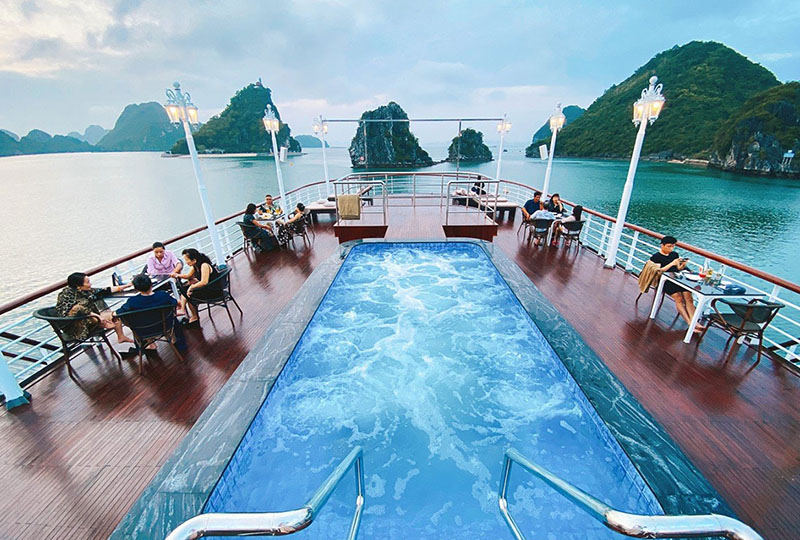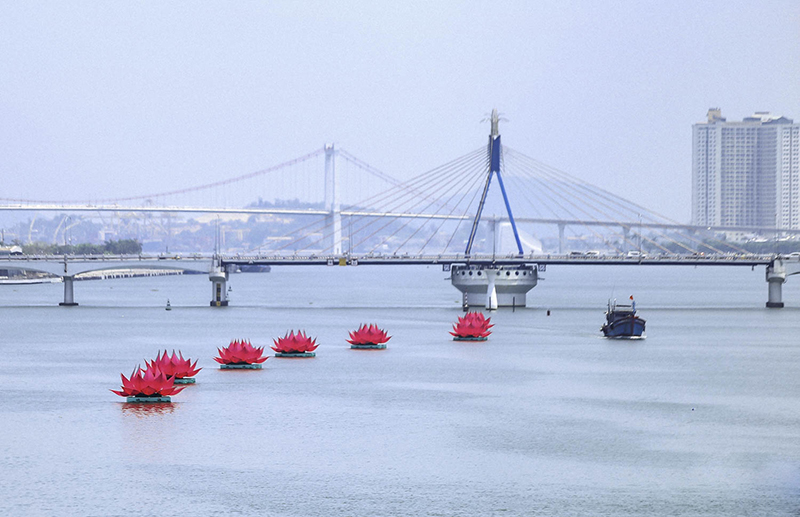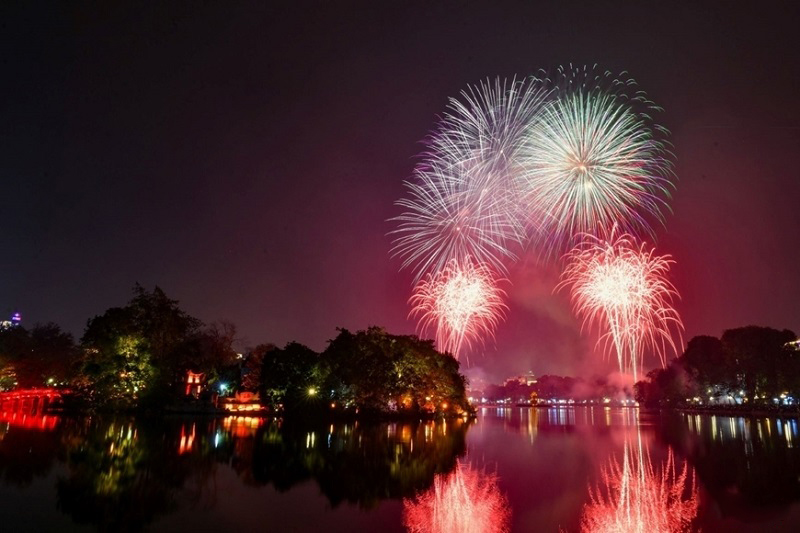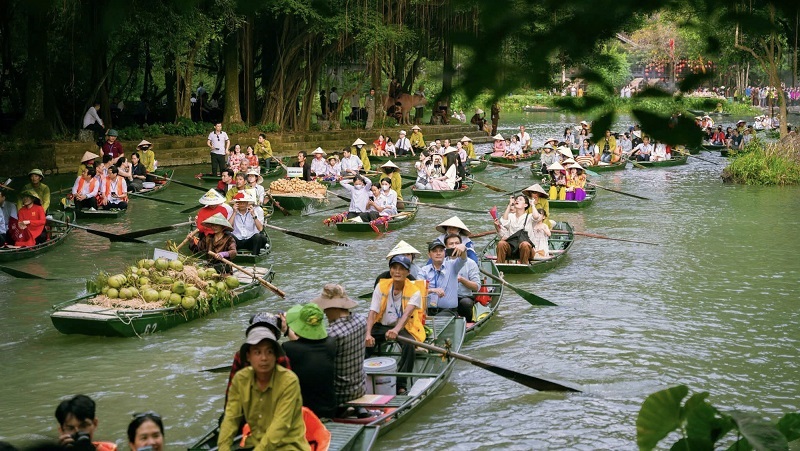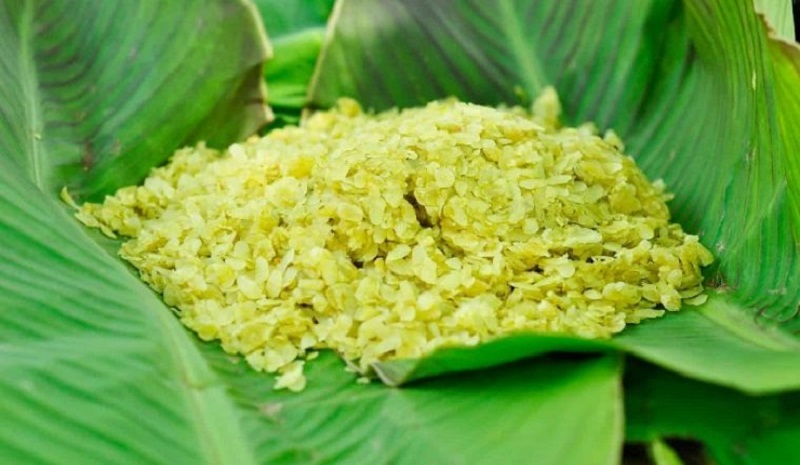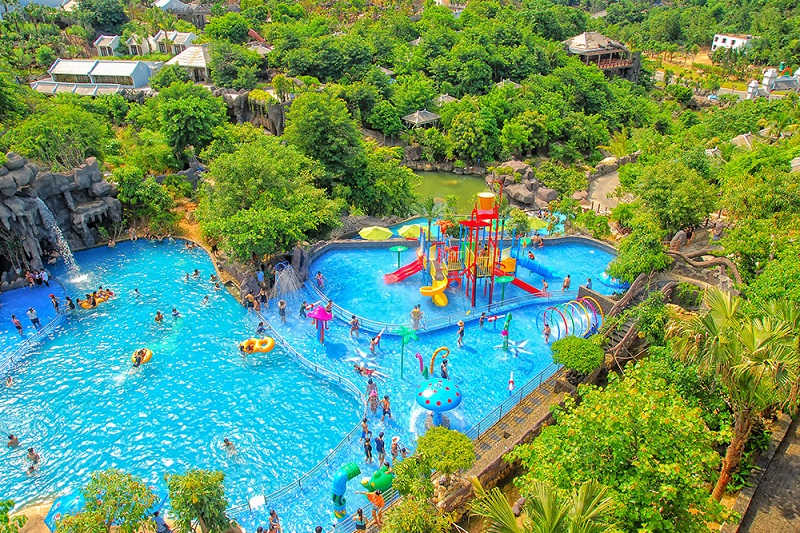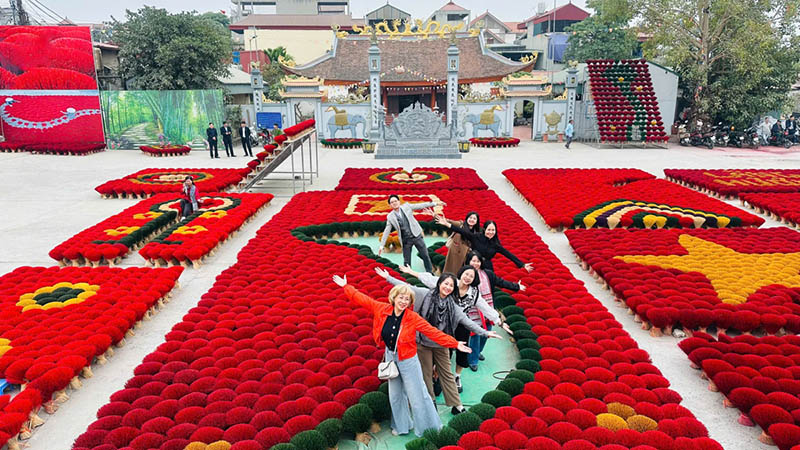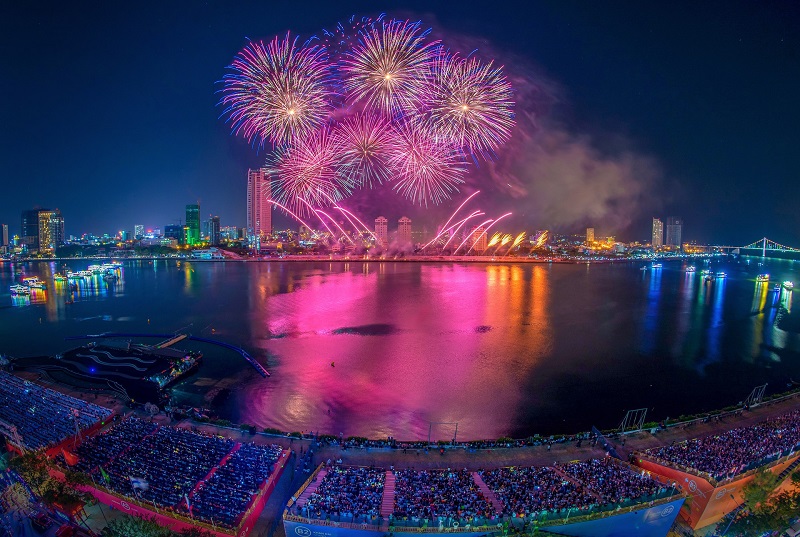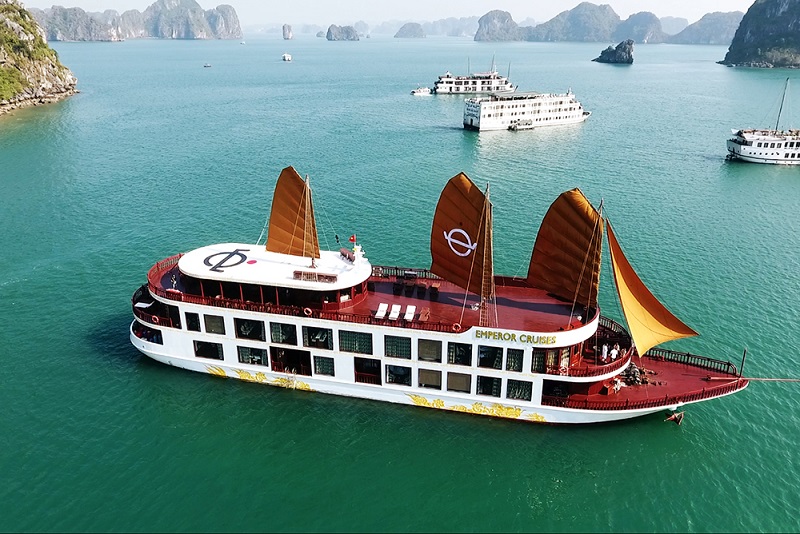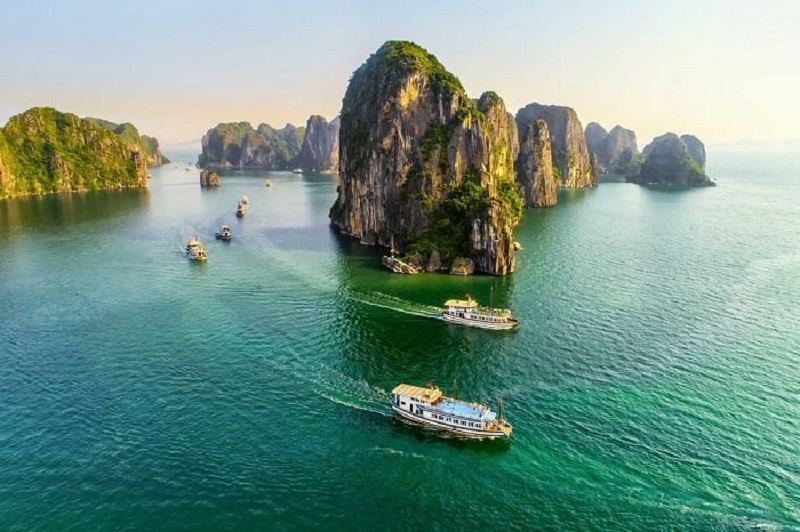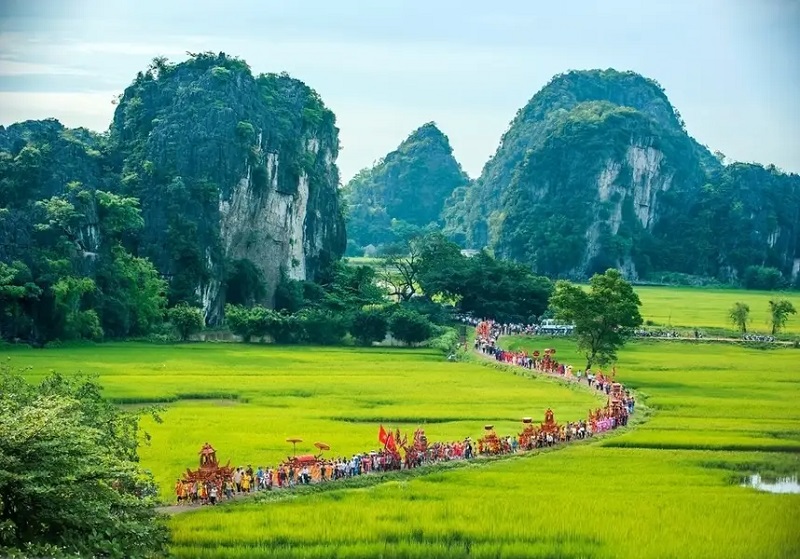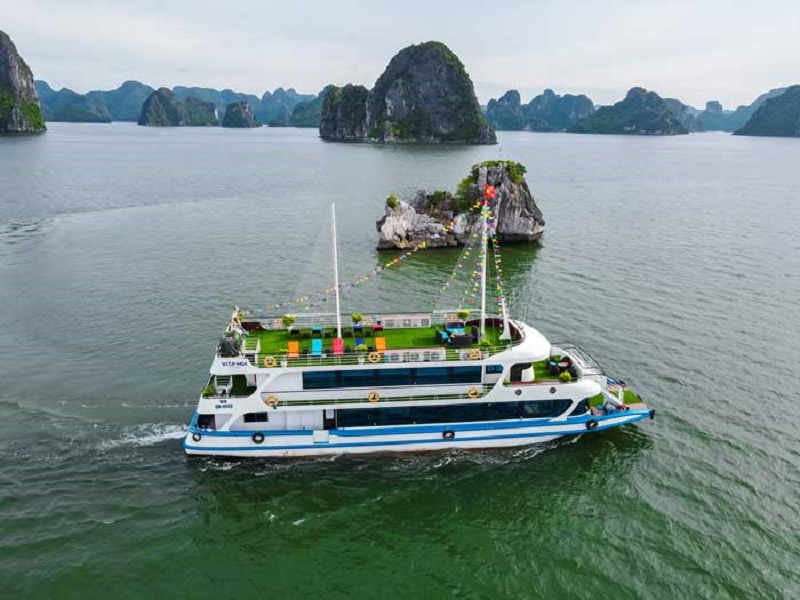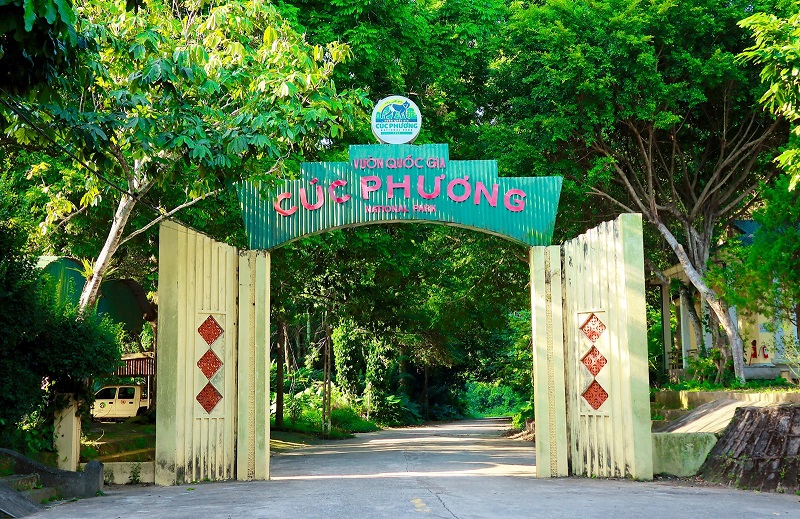Let’s travel with Vietlook Travel to visit the beauty of Hue Ancient Capital, a place with captivating beauty, with gentle and hospitable people, ancient tombs and majestic temples exuding a unique beauty.
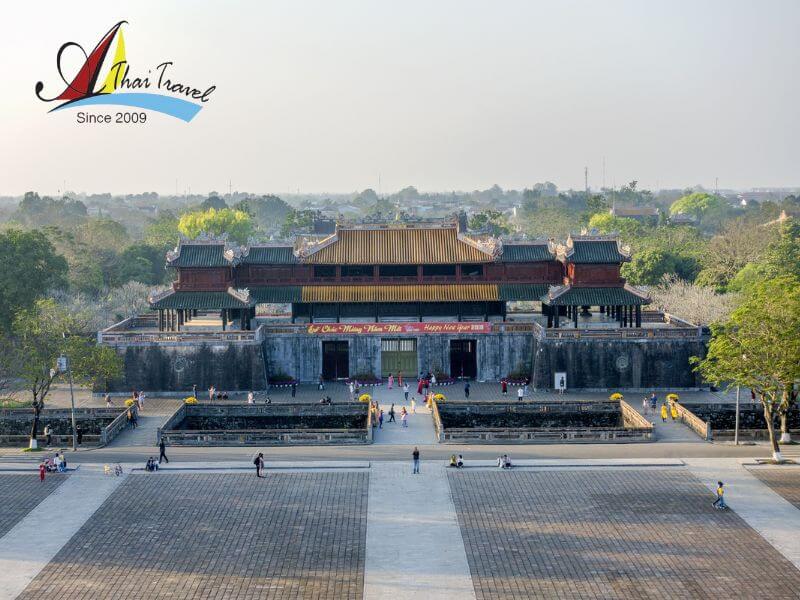
1. Overview of Hue Citadel
Hue is a coastal province in Central Vietnam, bordering Laos, the East Sea, Quang Nam, Da Nang and Quang Tri. Hue is famous for its poetic, peaceful and gentle beauty that always attracts tourists.
Hue Citadel is located on the poetic Huong River, built by the Nguyen Dynasty in the 19th century. Through many ups and downs, the Citadel is still a symbol of ancient beauty and peace in Hue.
From afar, Hue Citadel appears with ancient, majestic beauty, containing unique architectural works. Coming to Hue tourism, visitors will visit the ancient lifestyle with palaces and temples, recalling the heroic history of the nation.
Coming to Hue Citadel, visitors can admire the majestic palaces, tombs and famous landscapes, listening to the folk songs on the poetic Huong River will bring visitors the most memorable vacation.
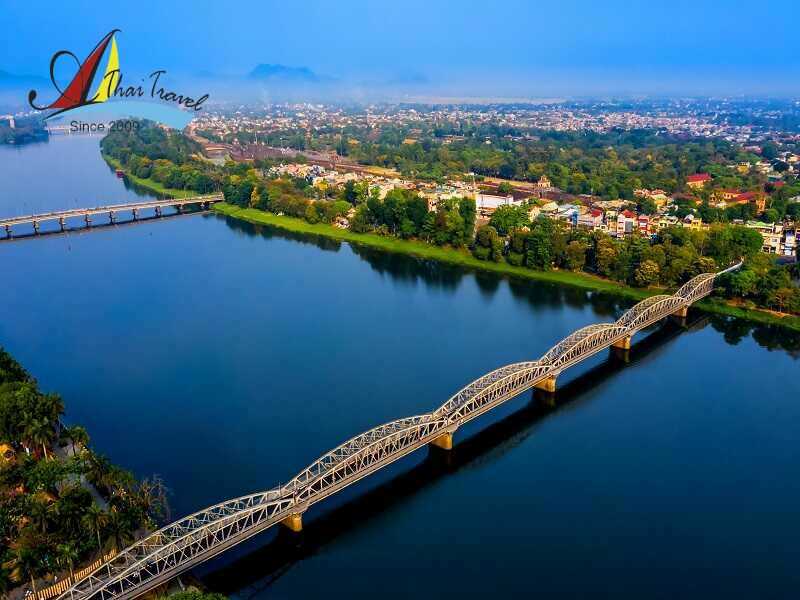
2. History of the formation and development of Hue Citadel
During the period of “King Le, Lord Trinh” the country was divided, Hue Citadel became the residence of 9 Nguyen Dynasty kings in the Central region. Built in 1805 under King Gia Long and existed for 27 years under the Nguyen Dynasty. Hue Citadel, which carries the ancient Vietnamese culture, was the capital of the Tay Son and Nguyen dynasties.
In 1993, the Complex of Hue Monuments was recognized as one of the 7 wonders of the world in Vietnam. A place of majestic beauty with simple, hard-working and hospitable people.
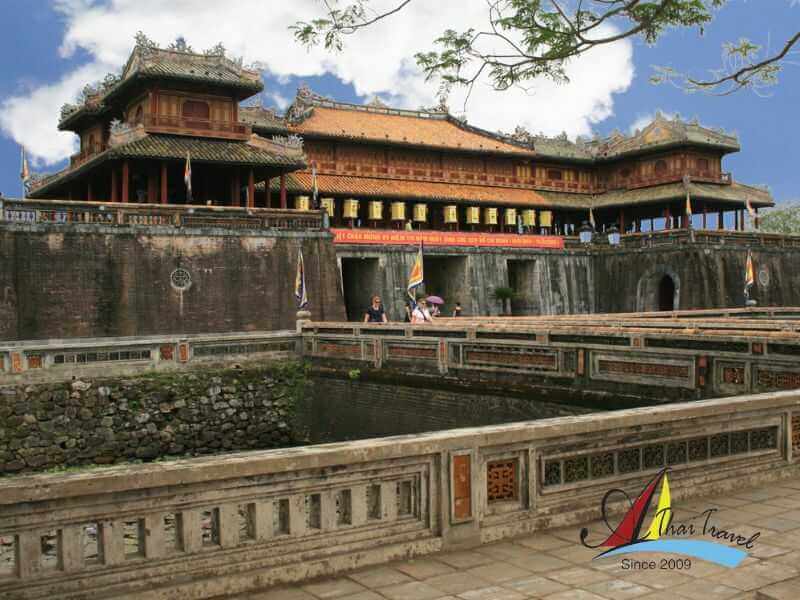
3. Space of Hue Imperial City
The ancient capital of Hue is structured by three layers of citadel: Forbidden City, Imperial City and Outer City, exuding ancient and majestic beauty, built on an area of over 500 hectares. Up to now, the ancient citadel still retains its pristine beauty and original architecture, with temples, palaces and mausoleums.
When coming to Hue Imperial City, visitors cannot help but be overwhelmed by the ancient beauty of the ancient capital of Hue, this is the pride of Vietnamese people in general and Hue people in particular, and is a destination that attracts tourists to visit and enjoy.
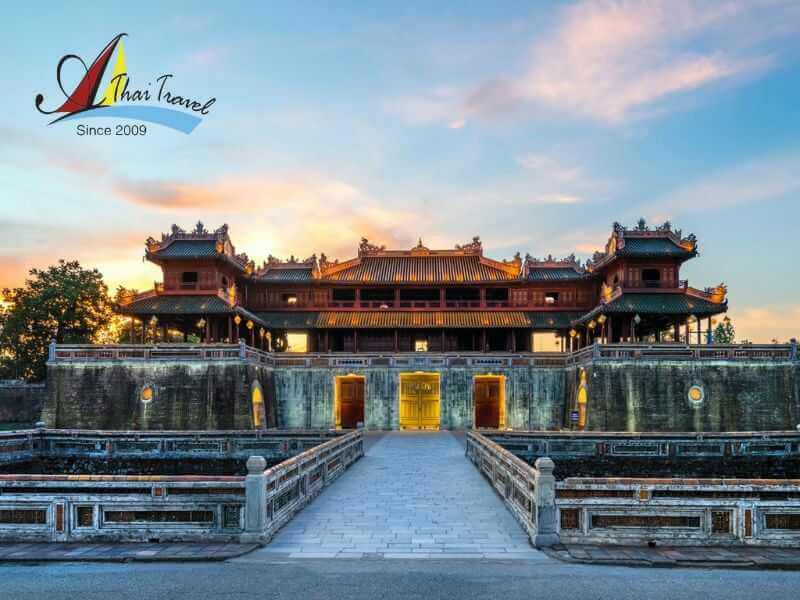
4. Places to visit in the ancient capital of Hue
Hue Imperial Citadel
Hue Imperial Citadel is the fortress of the ancient capital and a destination not to be missed when visiting Hue. This is a part of the historical evidence remaining after many centuries. The Imperial Citadel is located on the banks of the Perfume River, facing the South, which carries the heroic meaning of the ancient capital. Coming here, you will visit a meaningful historical relic.
Hue Citadel has 10 gates, including Bac Mon, The Nhon Mon, Dong Nam Mon, Nam Mon, Quang Duc Mon, Tay Bac Mon, Tay Nam Mon, Dong Mon, Dong Bac Mon. Hue Citadel was solidly built, with a large space and a thousand-year-old ancient beauty, Hue Imperial Citadel has become a cultural highlight imprinted in the minds of every visitor.
Ngo Mon is the main gate of Hue Imperial Citadel. Coming here, visitors will admire the majestic palace painting. With paintings of the glorious Nguyen Dynasty, Ngo Mon is an attractive destination for tourists when traveling to Hue.
Thai Hoa Palace is a special place located in the Hue Imperial City, where important ceremonies and rituals of the royal court took place. This place is decorated splendidly and majestically, symbolizing the solemnity of the dynasty of kings.
Ky Dai, also known as the Flag Tower, is a solemn place that exudes the national pride of the people of the ancient capital of Hue. Located just south of the Imperial City, Ky Dai is designed like steps over 17m high.
Cuu Ngu are nine bronze cauldrons cast by skilled artisans in the second year of King Gia Long. Each cauldron is a work of art imbued with cultural beauty and meticulous design. After two moves, Cuu Ngu is still a masterpiece that often appears in poetry.
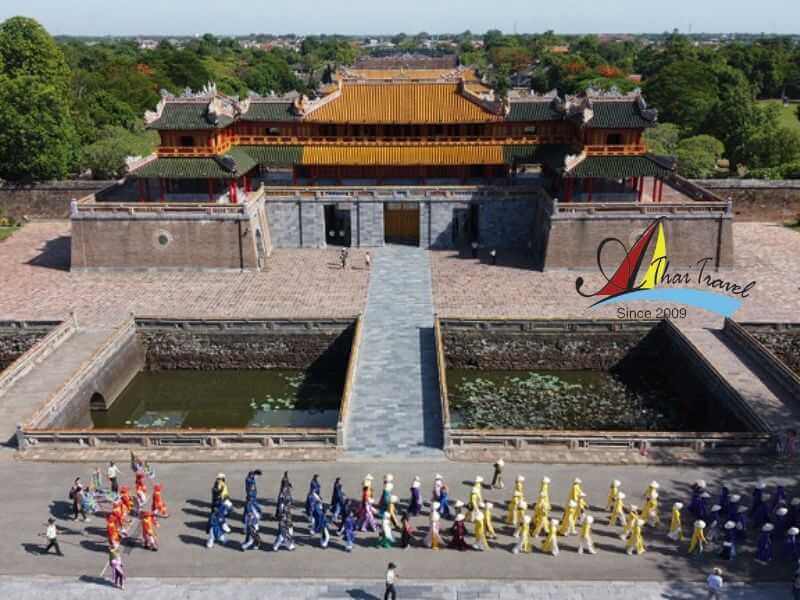
Forbidden City – Royal Monument in Hue Ancient Capital
Forbidden City is a historical relic and the residence of the King and the palace of the concubines, Forbidden City is the center of the Imperial City.
Dai Cung Mon is the main entrance to Forbidden City, with 5 compartments and 3 gates connecting to Ta Ve Duong and Huu Ve Duong. Built by King Minh Mang in 1833. Previously, the king used two main gates, the remaining two gates were for the mandarins in the court.
Ta Ve Duong and Huu Ve Duong are large structures serving the preparation of court ceremonies, a majestic beauty and through many years of history, from the feudal regime to modern life, this place still exudes a unique beauty.
Can Chanh Palace is where the court often held banquets and entertained foreign delegations. The project was built under King Gia Long III with many beautiful wooden architectural works, and has undergone many restorations.
Can Thanh Palace was originally called Trung Hoa Palace, which was the king’s resting and living place. This was a beautiful and majestic palace reserved for the royal family. However, Can Thanh Palace was destroyed by war.
Kien Trung Palace was where the king ate, lived and spent time with his family. The palace was built by King Khai Dinh in 1921 and its majesty and magnificence are testament to the dynasties.
Thai Binh Lau was where the king often came to rest and relax, he often wrote poems, read books and composed literature. Located to the south of Thai Binh Lau, Nhat Thanh Lau is a special architectural work built long ago, known as the place where the king’s Buddhist temple was located in the Forbidden City.
Duyet Thi Duong was built to become a theater for music and drama performances for the king. Designed luxuriously and majestically with unique decorative motifs, it is a must-see attraction when coming to Hue.
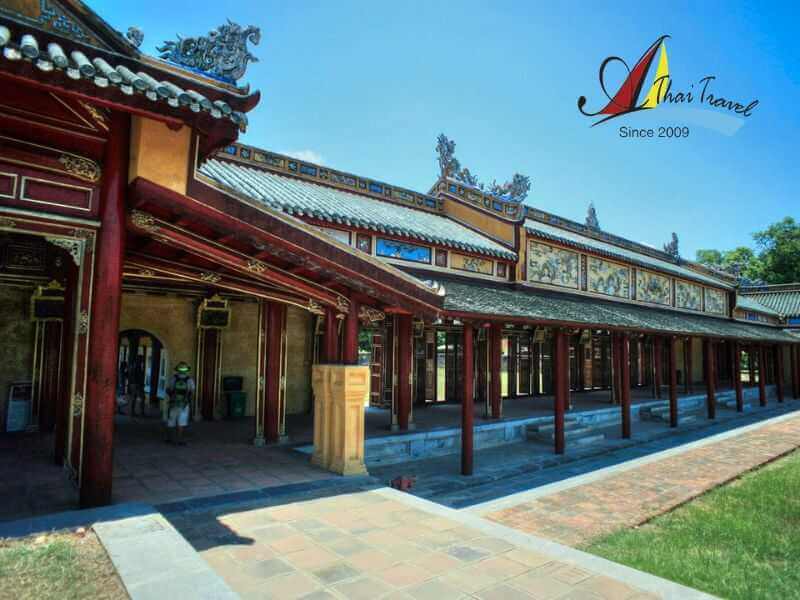
Gia Long Tomb
Gia Long Tomb in Hue is not only located in the most beautiful feng shui position among the Nguyen Dynasty royal tombs but is also famous for the love story between the king and Queen Thua Thien Cao. The tomb, also known as Thien Tho Lang, took 6 years to build (1814-1820) and includes many tombs in the Gia Long royal palace. The entire tomb is located in a pristine mountainous area, surrounded by a peaceful landscape, in Huong Long village, Huong Tra town, Thua Thien Hue province.
Minh Mang Tomb is surrounded by green pine forests and lotus ponds with architectural works designed in harmony with nature. In addition, Minh Mang Tomb also gives visitors a feeling of solemnity and majesty, surrounded by rows of cool green trees and a large lake, a space that is strangely quiet.
Khai Dinh Tomb is a beautiful and unique tomb that you should visit when you have the opportunity to come to Hue, with a design that blends the architectural style of the past and modernity. Khai Dinh Tomb, also known as Ung Lang, is one of the seven most beautiful tombs in Hue, located right on a mountain, more than 10km from the center of Hue city. Khai Dinh Tomb is one of the longest tombs of all the tombs in Hue. Although the area is small, Khai Dinh Tomb has a unique and sophisticated architecture, combining Eastern and Western styles.
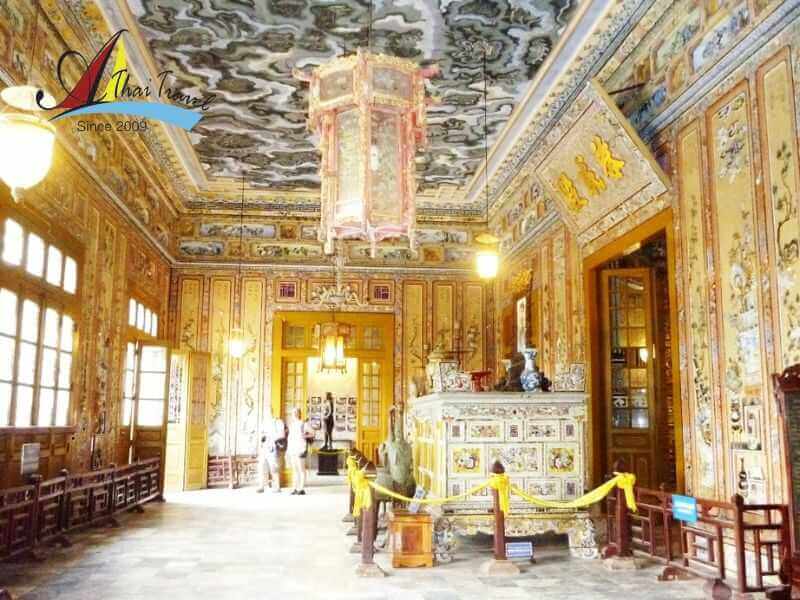
An Dinh Palace
An Dinh Palace has a total area of 23,463 m2 with many separate architectural works. An Dinh Palace was first built for King Khai Dinh when he was still a prince and was later inherited by King An Dinh. The palace has an ancient and sophisticated design.
The palace includes 10 different works such as: Boat Wharf, Main Gate, Khai Tuong Temple, Trung Lap Temple, Cuu Tu Dai Theater, Lake, Animal House… After a long history with many fluctuations and natural factors, there are now only three main works left for visitors to visit and admire, including the Main Gate, Trung Lap Temple and Khai Tuong Temple.
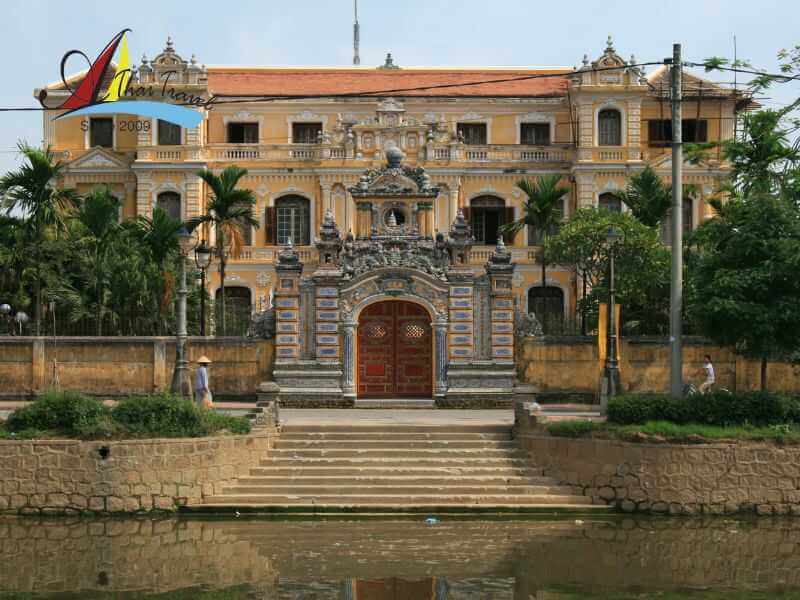
Hue Temple of Literature
Hue Temple of Literature was built by King Gia Long in 1808, a place that exudes majesty and solemnity on the banks of the Perfume River. Coming here, visitors not only visit the solemn tourist destination but also listen to Hue folk songs or take a boat trip to admire the poetic beauty of the Perfume River.
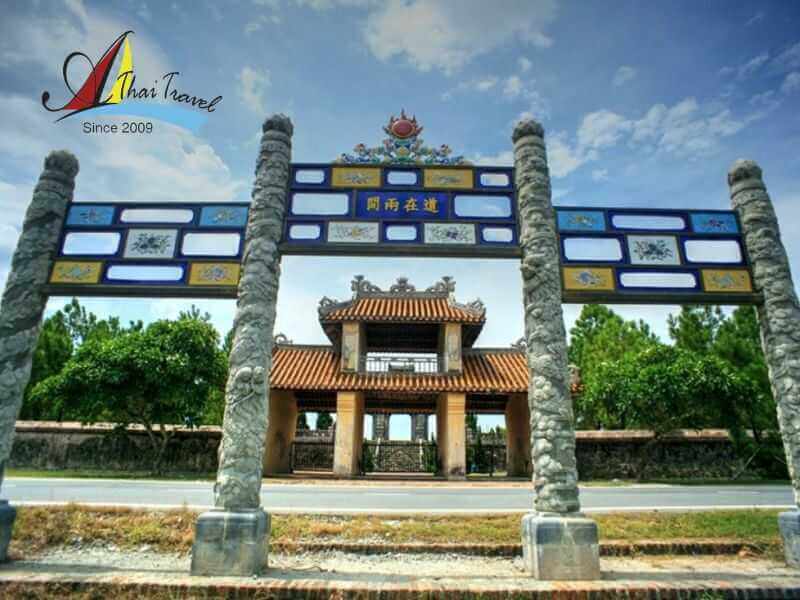
Hon Chen Temple
Hon Chen Temple is a temple dedicated to the Holy Mother Goddess located on the top of Ngoc Tran Mountain. It has architectural works designed in the style of palaces and temples. If you have the opportunity to visit Hue, visit here to feel the unique beauty of this ancient place.
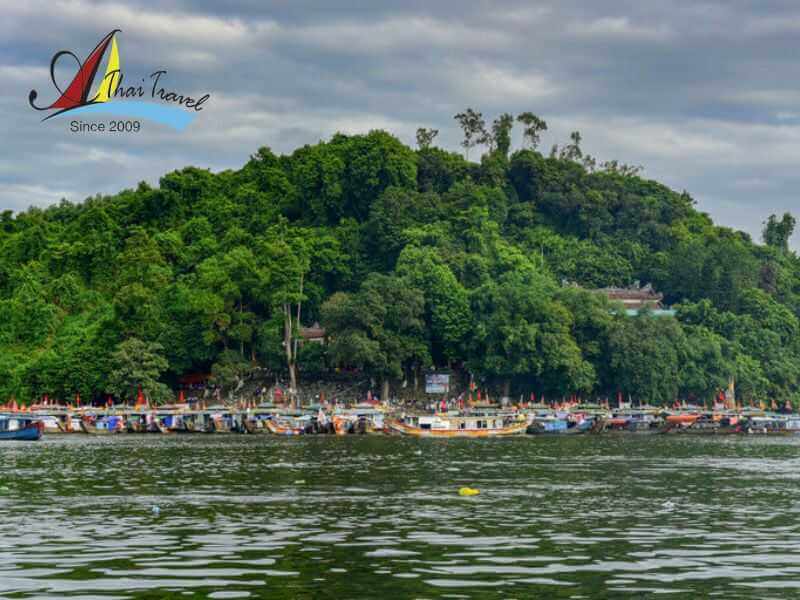
Nam Giao Altar
In the past, it was often the place where the royal court held ceremonies to worship heaven and earth, at the beginning of the dry season or flood season every year. Nam Giao Altar was chosen as a sacred place for the king to perform rituals to worship heaven. Up to now, Nam Giao Altar is a check-in point chosen by many tourists when coming to the ancient capital of Hue, with a cool, poetic and peaceful landscape. The space here is both poetic and peaceful, bringing a pristine and quiet scene.
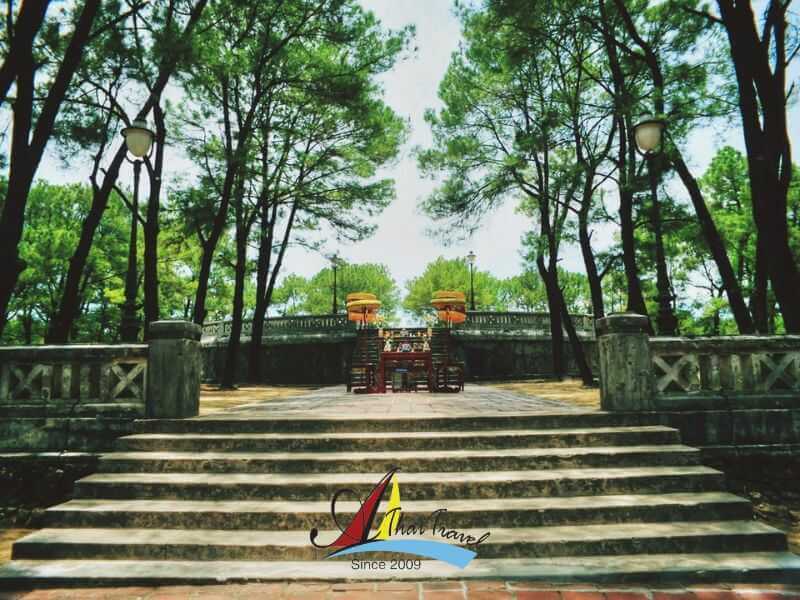
Thien Mu Pagoda
A familiar destination for those who love Hue scenery. Thien Mu Pagoda was built in 1601 by Lord Nguyen Hoang. Located right on Cu Khe hill overlooking the poetic Huong River. Not only that, the pagoda is also a place that contains many mysterious stories such as Dinh Huong Nguyen, Dien Dai Duong, along with harmonious Oriental architecture.
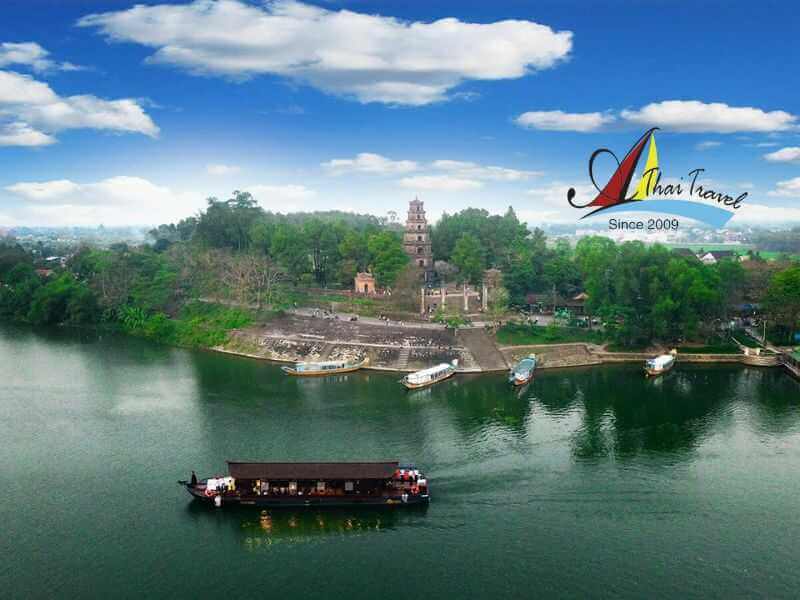
Perfume River
A poetic and peaceful river, located in the heart of the ancient capital of Hue, like a peaceful and quiet silk strip and a symbol of the ancient capital. Coming to the Perfume River, visitors can sit on a dragon boat to enjoy the beauty and admire the ancient Hue citadel. At night, going down the boat to listen to Hue singing on the Perfume River is a unique cultural activity that Hue brings to visitors.
When taking a boat on the Perfume River, visitors will feel the peace and gentleness of the green silk strip flowing throughout the four seasons. The Perfume River always captivates people, with its irresistible beauty when stopping by the Perfume River on small boats, the Perfume River takes visitors through the cool Vy Da garden, upstream to listen to the temple bells echoing towards Thien Mu Pagoda, and then gradually drifting along the clouds at Huyen Khong wharf.
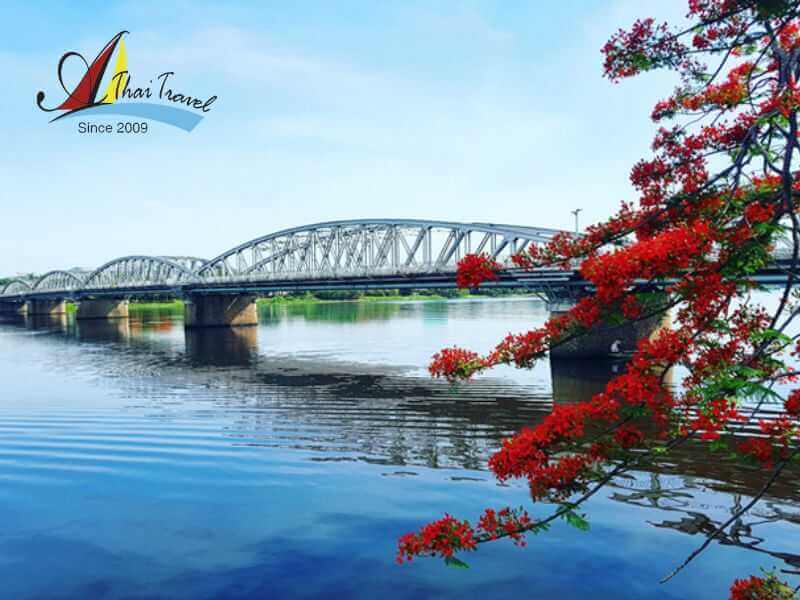
Lang Co Bay
One of the destinations not to be missed when traveling to Hue. Looking from Hai Van Pass, Lang Co appears charming and peaceful, with poetic blue sea water. Lang Co is still very beautiful and charming, you should come here once to feel the unique beauty that nature has bestowed upon this place.
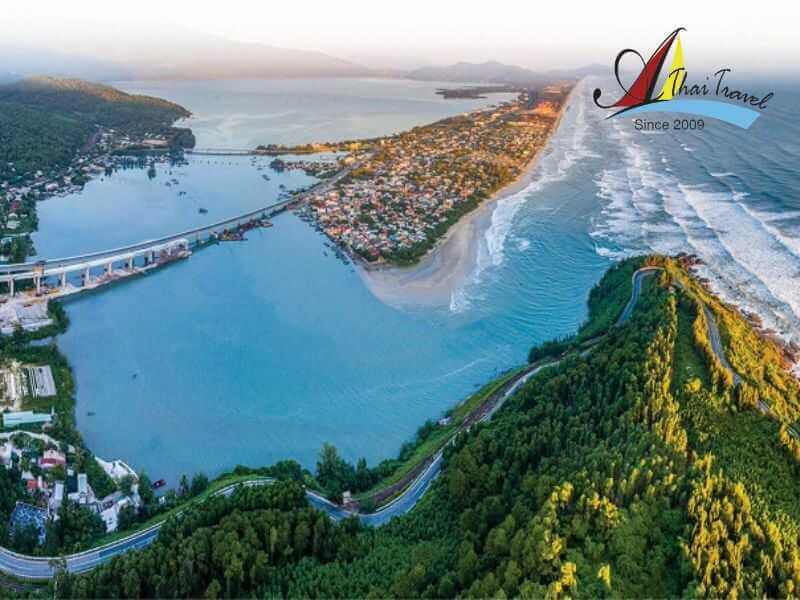
Trang Tien Bridge
A symbol of the dreamy and magical land of the ancient capital of Hue. The bridge has 6 spans, walking around Trang Tien Bridge, visitors not only have the opportunity to admire the beauty of the gentle Huong River and the bustling city scene but also learn more about the historical marks of the past.
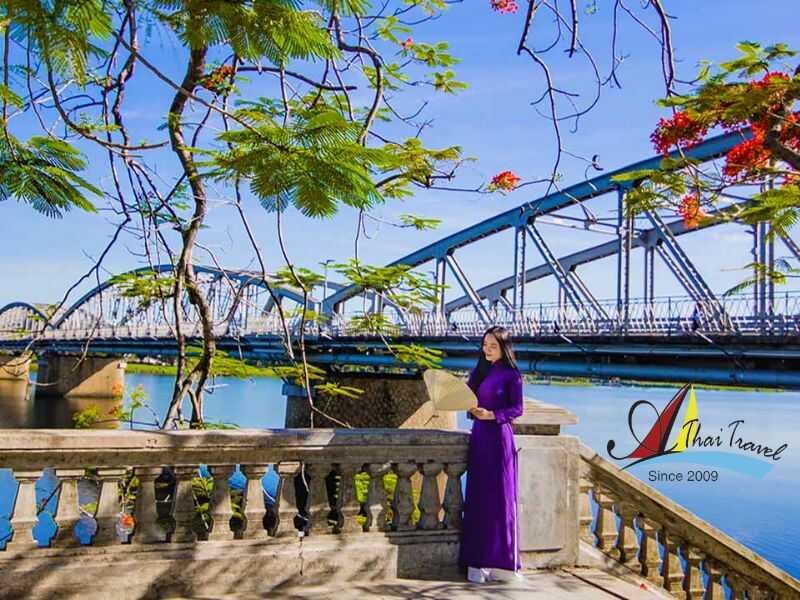
Vietlook Travel vừa chia sẻ những thông tin cho chuyến du lịch Huế, bạn hãy tham khảo để chuẩn bị cho chuyến đi thú vị nhất. Qua bài viết hy vọng bạn đã có cái nhìn khách quan và khám phá ra những điều mới mẻ để có kỳ nghỉ đáng nhớ tại vùng đất Huế xinh đẹp và thân thương.

